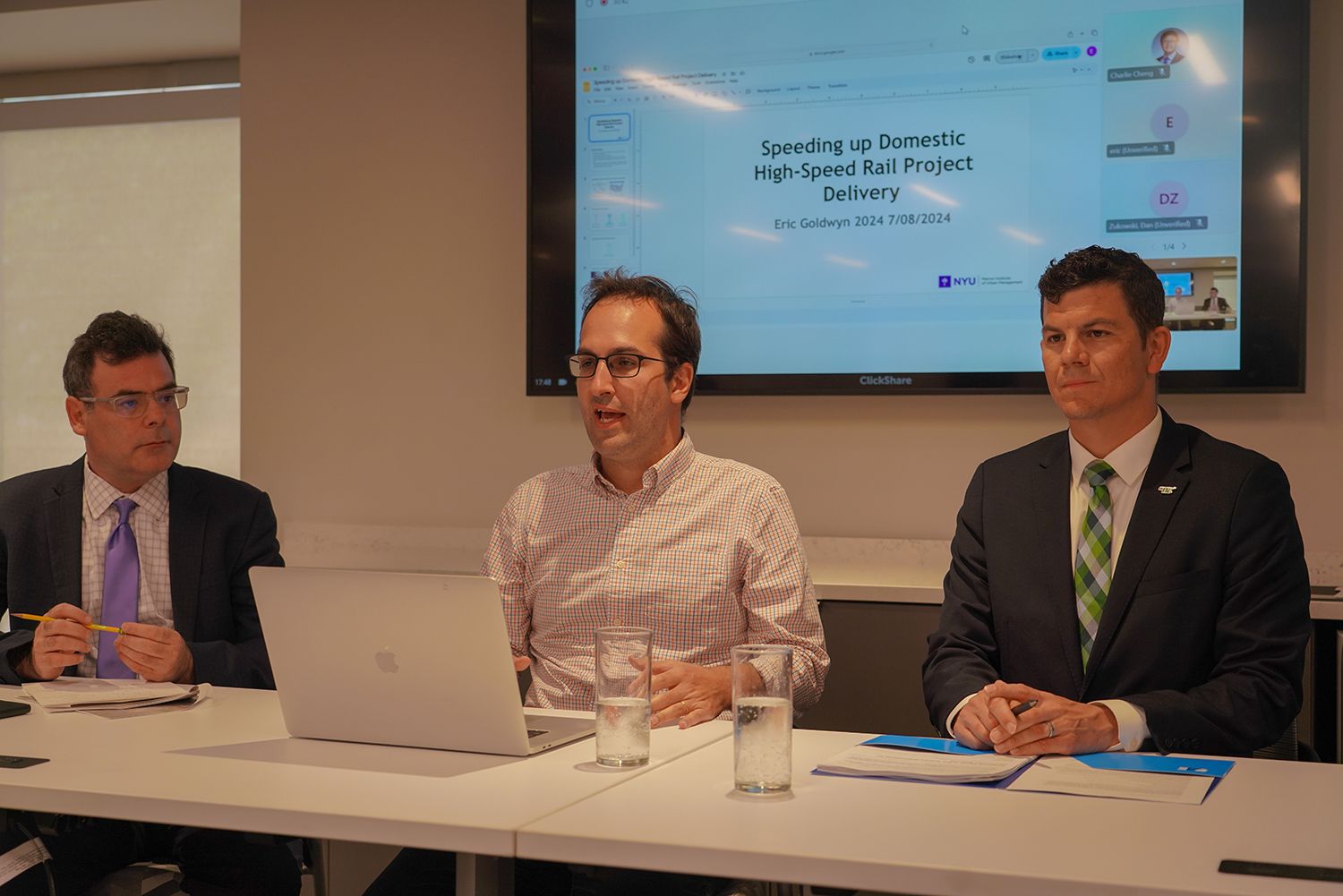Welcome to the July edition of A Capitol View.
It’s the “silly season” again, or what the Mirriam-Webster dictionary defines as “a period marked by frivolous, outlandish, or illogical activity or behavior.”
Even so, SMI’s federal lobbying, marketing, and communications practices are keeping it real as we advance clients’ priorities to strengthen domestic manufacturing and infrastructure projects and make progress on a host of national security and clean energy programs and policies.
We’re in the throes of budget season on Capitol Hill, ahead of the August recess, as the House and Senate make meaningful progress on appropriations for federal agencies and must-pass defense policy bills.
One big thing to watch: A new Senate agreement to seek $34.5 billion in emergency funding to fiscal 2025 spending bills – $21 billion for defense and $13.5 billion for non-defense programs – bodes well for projects with bipartisan support that have not been funded in either House or Senate versions of appropriations bills.
Thanks for tuning into our monthly run-down on what the SMI family is up to and what’s in store.
STRATEGIC COMMUNICATIONS
 FULL SPEED AHEAD: It feels like high-speed passenger rail in North America has always been just around the bend, only for the grand plans to fizzle.
FULL SPEED AHEAD: It feels like high-speed passenger rail in North America has always been just around the bend, only for the grand plans to fizzle.
But there is renewed optimism that its arrival is finally on the horizon. And SMI is proud to be helping the public-private push to catch up with the rest of the industrialized world, which has been out in front for decades.
SMI client SAE Industry Technologies Consortium, which serves as the neutral forum for developing industry-wide technical standards across transportation sectors – including in automotive and aerospace – announced it is branching out into the rail sector.
“SAE ITC’s expansion into rail aims to address the current lack of intercity rail technology alignment and standardization, particularly in North America,” said Fabian Koark, executive VP and COO. “There can be no positive economic development without intercity connections,” he said. “Other parts of the world recognize that.”
Convening authority: SMI’s strategic communications practice, led by VP Bryan Bender, along with SMI Senior Director John Major, a mobility industry veteran, helped organize a kickoff press briefing that also drew policymakers and congressional staff.
The discussion, moderated by Bender, also included Bryan Sooter, director of standards at the American Public Transportation Association. It was part of broader efforts to bring together the key public and private sector players in Washington and beyond to seize on the confluence of historic factors that could finally turn the high-speed rail vision into reality.
Such factors include the economic imperative to compete with the rest of the world; pressure to meet our sustainability goals; greater federal spending; and promising regional efforts — particularly in the West and Southwest — to introduce high-speed where the federal government has demurred.
Unique moment’: The event also featured the release of a new report from NYU’s Marron Institute of Urban Management, “How to Improve Domestic High Speed Rail Project Delivery.”
“This is a unique moment in the history of domestic high-speed rail,” said author Eric Goldwin. “Domestic high-speed rail’s future depends on acknowledging that existing institutions and practices have not produced the desired outcomes.” He cited the largely uncoordinated efforts to introduce intercity high-speed rail in California, Nevada, and Texas.
“Rather than drag one or two high-speed rail projects into revenue service in the coming decades at enormous cost, we need to address the intercity rail market with a holistic vision for rail across the country,” Eric added.
What’s next: Andy Byford, the New York City transit chief-turned-Amtrak high-speed rail guru, told the forum hosted by SAE ITC that he expects the national passenger rail service’s much-awaited strategy on high-speed rail to be made public by the end of the month. “We are deadly serious,” he said, about correcting what he labeled a “complete anomaly” compared to other wealthy nations.
“Why did the U.S. used to lead the world in high-speed rail and now we find ourselves pretty much the standout from the high-speed rail club in the Western, developed world and Asia?” he asked. “We intend to do something about that.”
Koark pledged that SAE ITC will work with federal agencies, the rail industry, and other national and regional stakeholders in the effort to develop high-speed rail standards.
Read some of the press coverage of our event:
Report: Standardizations, Federal Commitment Needed for High-Speed Rail in the U.S.
New report outlines ways high-speed rail projects can be completed faster in U.S.
Another high-speed rail project would connect Las Vegas to additional CA stops
5 recommendations for high-speed rail success
ON THE MENU: Our communications business also convened a salon dinner and discussion last month, titled “Energy Transition: Rhetoric vs. Reality,” for an SMI client. The dinner and discussion featured a top White House official, leading think tanker scholars, former executive branch leaders, and select representatives from the news media.
ON THE ROAD: SMI will take its comms portfolio on the road this month to the American Institute of Aeronautics and Astronautics’ ASCEND conference in Las Vegas, where VP for Strategic Comms Bryan Bender will moderate a fireside chat with Space Development Agency Director Derek Tournear and a panel titled “What is Your Why: Defining and Communicating the Strategy of Space.”
SMI SPOTLIGHT
TEAM BUILDING: SMI continues to build out its roster of senior advisors across multiple policy and technology areas – from additive manufacturing to energy policy – to help clients achieve their goals:
· Robert Smith recently retired as director for Navy SBIR/STTR Programs. “Robert’s understanding of how small businesses can solve some of the military’s toughest technological problems and pave the way for new battlefield capabilities is unparalleled,” said SMI CEO Bill McCann. “We are looking forward to leveraging his expertise to help clients to preserve what works and make improvements.”
· Alan Hill is a former staffer for the House Energy and Commerce Committee and telecom executive who also has deep experience in additive and advanced manufacturing and artificial intelligence. He served as government relations advisor to the National Graphene Association, where he helped execute its appropriations strategy, and has also worked with researchers at the University of Mississippi to set up an innovation center focused on the light and strong material made that holds promise for a host of industrial purposes.
· Franz Wuerfmannsdobler is a veteran of the Senate Appropriations’ Energy and Water Subcommittee with strong ties to senior lawmakers and staff in both chambers, manufacturing Institutes, and research universities. He secured dozens of provisions in major energy legislation over the past two decades.
Check out all our senior advisors.
DEFENSE
 MATERIAL WORLD: The Office of the Secretary of Defense has published the official proceedings of the inaugural Advanced Materials Summit, a first-of-its-kind gathering of government, industry and academia hosted by SMI earlier this year on behalf of the Pentagon leadership.
MATERIAL WORLD: The Office of the Secretary of Defense has published the official proceedings of the inaugural Advanced Materials Summit, a first-of-its-kind gathering of government, industry and academia hosted by SMI earlier this year on behalf of the Pentagon leadership.
Removing barriers: The proceedings were issued by Dr. Aisha Haynes, DoD’s principal director for advanced materials, who said a follow-up summit is in the works.
“The coalition between DoD and Industry will shape strategies that remove barriers to delivering advanced capabilities to the Warfighter at speed and scale. In the coming months, please look out for announcements on next year’s summit and the Materials Challenge,” she said.
Our take: “SMI was honored to host the inaugural Advanced Materials Summit and contribute to the Defense Department’s fresh dialogue on developing more effective public-private partnerships and new policy levers that will strengthen a critical but often overlooked sector of our defense industrial base,” added SMI COO Ken Wetzel. “The insights gained at the Advanced Materials Summit were a key first step in developing impactful strategies that will accelerate the deployment of new structural materials and manufacturing processes in current and future defense systems.”
Please send requests for the official proceedings to Bender at bender@strategicmi.com or Ken Wetzel at ken@strategicmi.com.
Related: Lucideon joins U.S. Advanced Ceramics Association.
‘GAME CHANGING’: SMI clients will play featured roles at the upcoming high-level Emerging Technologies for Defense conference and expo hosted by the National Defense Industrial Association in Washington.
As a part of the “Game Changing” session, Velo3D, the Silicon Valley additive manufacturing company that has broken into the defense and space market, will deliver a presentation titled “Building Distributed Supply Chains for Mission-critical Defense Parts With Additive Manufacturing.”
Also on the agenda: Physical Sciences Inc. which develops electro-optical and infrared sensing systems and other technologies for the defense, homeland security, medical and energy sectors. The company will discuss “The Role of Technology Platforms in Transitioning SBIR and STTR Developed Technology.”
Captive audience: Among the gathering’s headliners: Deputy Secretary of Defense Kathleen Hicks; Under Secretary of Defense for Research and Engineering Heidi Shyu; Under Secretary of Defense for Acquisition and Sustainment Bill LaPlante; and Vice Chairman of the Joint Chiefs of Staff Adm. Christopher Grady.
COMING TO FRUITION: A key milestone has been reached in equipping troops with lighter, longer-lasting lithium-ion batteries, with the first large volume production run of NanoGraf Corporation’s M38 18650 cell.
The SMI client has produced approximately 50,000 cells as part of the Army’s Family of Advanced Standard Batteries (FASTBat) program, which will be used primarily for tactical radios.
Powering soldiers: “We’ve been working toward this production milestone for several years, and it’s incredibly exciting to see it come to fruition,” said NanoGraf CEO Francis Wang. “We’re very proud to reach our goal of producing this many finished cell products… and “to ensure soldiers have the power they need to complete their missions.”
NanoGraf COO Connor Hund described the production run as “validating that our commercial scale manufacturing successfully meets the performance requirements.”
This milestone comes on the heels of a $15 million Army contract for NanoGraf to develop cross-compatible batteries for soldiers in the field, bringing total DoD funding to $45 million. And in March, the company announced a new 67,850-square-foot facility for advanced manufacturing and to expand R&D.
ENERGY
 PLEASE RECYCLE: One of the building blocks of a robust and lasting clean energy economy is the vibrant recycling industry for electric battery materials. In a big step forward, SMI client Princeton NuEnergy (PNE) has broken ground in South Carolina on the nation’s first commercial-scale lithium-ion battery recycling facility.
PLEASE RECYCLE: One of the building blocks of a robust and lasting clean energy economy is the vibrant recycling industry for electric battery materials. In a big step forward, SMI client Princeton NuEnergy (PNE) has broken ground in South Carolina on the nation’s first commercial-scale lithium-ion battery recycling facility.
The company will leverage Princeton University’s low-temperature, plasma-assisted separation process (LPAS™) that recovers more than 95 percent of lithium-ion materials found in battery chemistries. It is estimated that the facility will recycle material equal to 100,000 EV batteries each year.
“A circular battery economy means materials stay in-country, from genesis to end-of-life recycling and remanufacturing,” PNE says. “Battery feedstock comes from various consumer goods and industrial sources, including mobile phones and computers, batteries from children’s toys, electric vehicles, and industrial energy storage facilities.”
Greentech leader: PNE, which was featured in TIME’s “America’s Top Greentech Companies 2024,” produces battery-grade cathode and anode materials that can be directly re-introduced into cell manufacturing at 40 percent less cost and with a substantially lower environmental footprint over conventional methods.
CATCH A WAVE: The domestic offshore wind industry has seen a series of setbacks, with project delays and multiple companies backing away from or renegotiating contracts, including Ørsted, Equinor, bp and Avangrid. However there is still reason to be bullish on the future of the industry, according to Christopher Niezrecki, Director of the Center for Energy Innovation at the University of Massachusetts, Lowell.
“The offshore wind industry’s troubles are complicated, but it’s far from dead in the U.S., and some policy changes may help it find firmer footing,” he writes in a new commentary in The Conversation.
Permitting reform: One such policy change recommended by Niezrecki is to reform the government permitting process.
“For a project to move forward, developers may often need to secure dozens of permits from local, tribal, state, regional and federal agencies,” Niezrecki says . “The federal Bureau of Ocean Energy Management, which has jurisdiction over leasing and management of the seabed, must consult with agencies that have regulatory responsibilities over different aspects in the ocean … as well as groups including commercial and recreational fishing, Indigenous groups, shipping, harbor managers and property owners.”
Delays caused by such lengthy processes have also impacted project costs. “Steep increases in commodity prices, including for steel and copper, as well as in construction and operating costs, made many contracts signed years earlier no longer financially viable,” Niezrecki writes.
Just the facts: Niezrecki also cited the obstacles of lawsuits and disinformation about offshore wind farms that “add to the challenges.” And he said “the nation also lacks a well-trained workforce for manufacturing, construction and operation of offshore wind farms.”
CLIMATE TECH
 NEW FOUNDATIONS: SMI clients Florida Atlantic University and University of Florida are participating in the consortium selected by the Commerce Department’s Economic Development Administration to develop sustainable building materials and other technologies to stave off climate change.
NEW FOUNDATIONS: SMI clients Florida Atlantic University and University of Florida are participating in the consortium selected by the Commerce Department’s Economic Development Administration to develop sustainable building materials and other technologies to stave off climate change.
The South Florida ClimateReady Tech Hub will utilize up to $19 million in grants “to implement three projects that will bolster the region’s ability to scale up the production and delivery of critical technologies that will strengthen America’s clean energy transition,” according to the announcement.
Concrete steps: The hub, one of a dozen slated for funding nationwide, will pursue “sustainable and resilient infrastructure,” or SIR, solutions, including developing advanced concrete technologies with reduced emissions. The final grant amount will be finalized in the coming months.
CLIENTS IN THE NEWS
Wave energy to rival offshore wind costs by 2030s, study shows
Govini Receives Impact Level 5 Provisional Authorization for Ark





